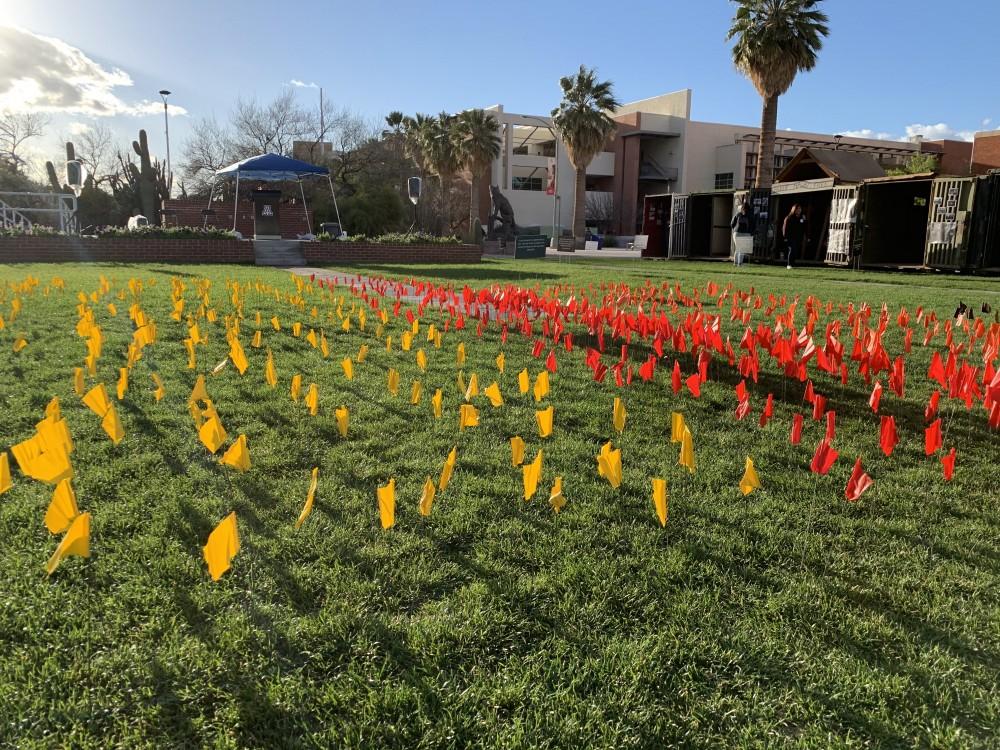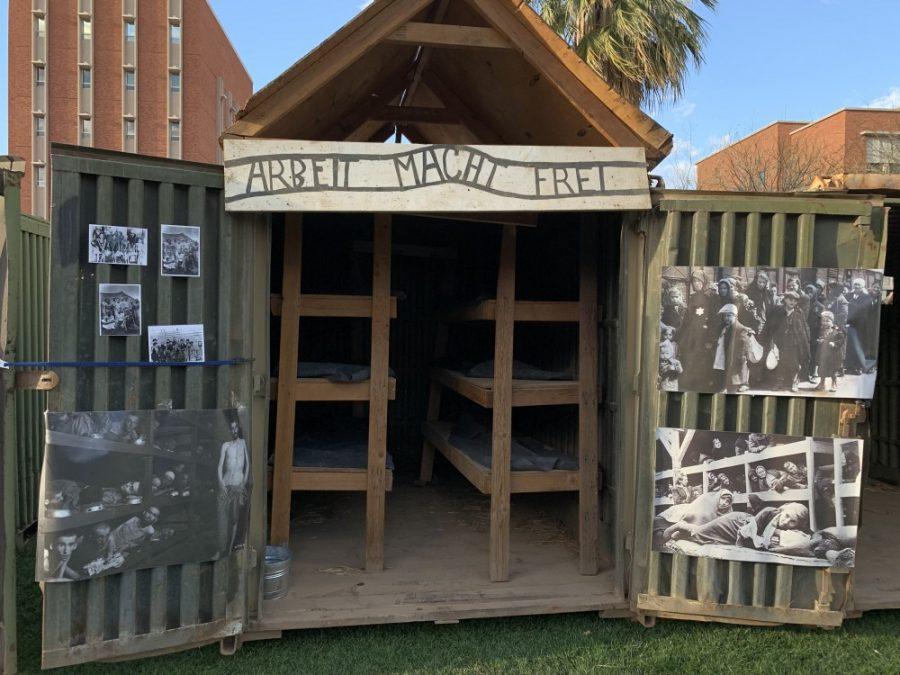The 28th Annual Holocaust Vigil was held on the University of Arizona Mall Wednesday morning. The vigil is held to honor and remember all those that suffered in the Holocaust.
For 24 consecutive hours, as many names as possible from all those that died in the Holocaust were read aloud by volunteers in 15-minute intervals. The vigil began on Wednesday, March 13 at 10 a.m. and ended on Thursday morning at 10 a.m.
The Hillel Foundation organizes the event every year. Students who are active within Hillel help put the event together and stay at the event as it goes on.
RELATED: Holocaust survivor shares story with Tucson community
Josh Gaines is a junior at UA and a co-chair for the vigil. He said he has always “been involved in Jewish life” and considers Hillel a “home away from home,” as it gave him a place of acceptance at college.
“The vigil is a representation of what happened during the Holocaust,” Gaines said. “It’s designed to educate people about what happened … Holocaust remembrance is decreasing in society. A lot of people are denying it but also just missing facts, for example saying numbers that are off.”
Cameron Almosnino is a sophomore at UA and the other co-chair for the vigil. This was his first year working the vigil, although he has been involved with Hillel for a long time and has volunteered at the vigil before.
“I found it to very moving and very meaningful so I wanted to take [on] a bigger role in the actual process and bring some new ideas to the vigil this year,” Almosnino said.
Almosnino said there are around 200,000 names on the list that is read during the vigil, but they rarely can get through them all.
Along with reading the names of victims, the event featured flags representing the different groups of people that died in the Holocaust, cattle cars that people were transported in to the concentration camps, an art project people can partake in, photos showing the experiences of those that were put in the camps and multiple quotes from celebrities, survivors and other influential figures.

“The purpose of the vigil is to engage people’s senses. We have the names [being read] in the background, we have the pods as a visual, we have an art project so that people can take a piece of the vigil home with them,” Almosnino said.
RELATED: Campus Guide ’17: Hillel Foundation offers Jewish take on home away from home for students
Gaines said they find volunteers by recruiting their friends as well as reaching out to fraternities and sororities to give the vigil more representation from within the university.
The Hillel Foundation and all those involved with the vigil hope that it can open people’s eyes to the reality of the Holocaust as well as teach people an important lesson about the tragedy that took place, according to Almosnino.
“In addition to taking away an academic understanding, I want people to have a more impactful, visceral experience of the Holocaust,” Almosnino said. “I want to make it more personal, that’s what I want people to take away.”
Follow Quincy Sinek on Twitter









